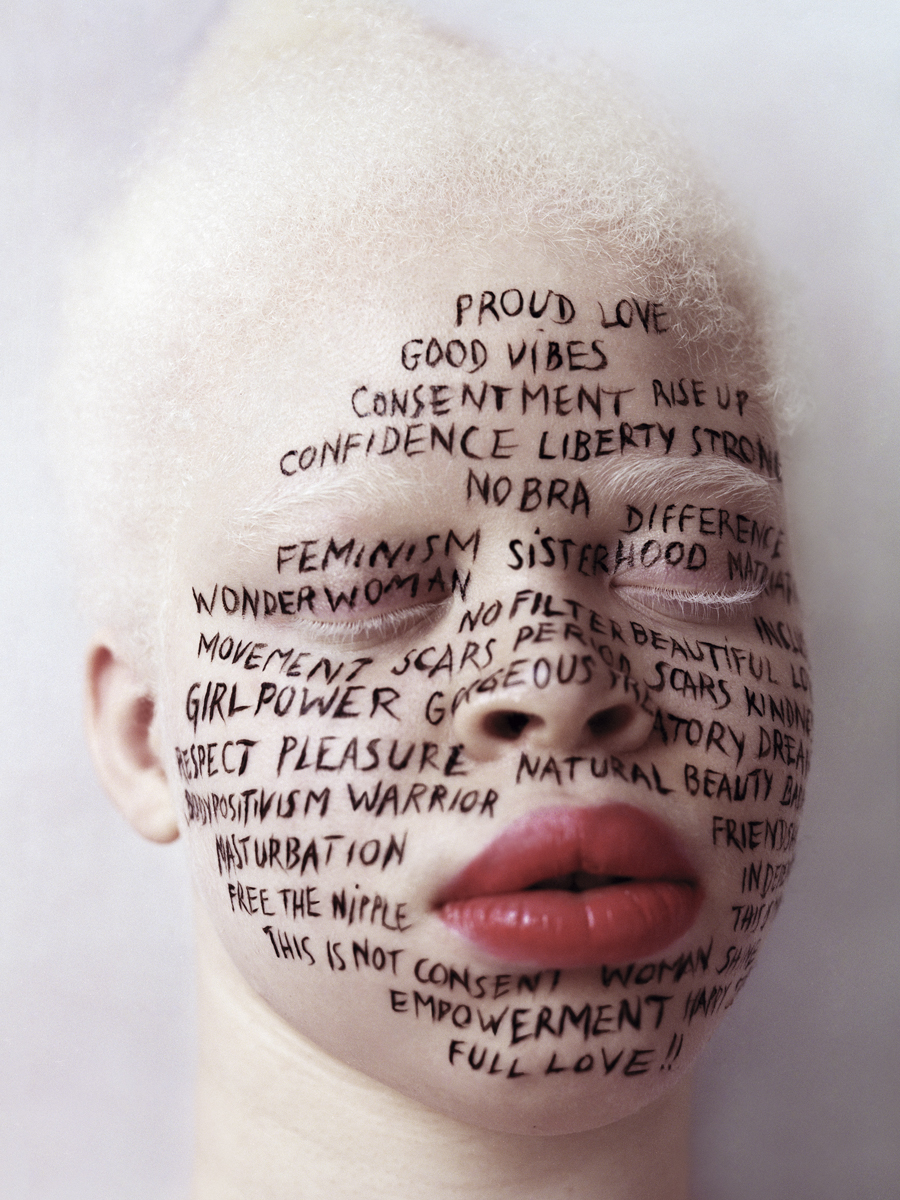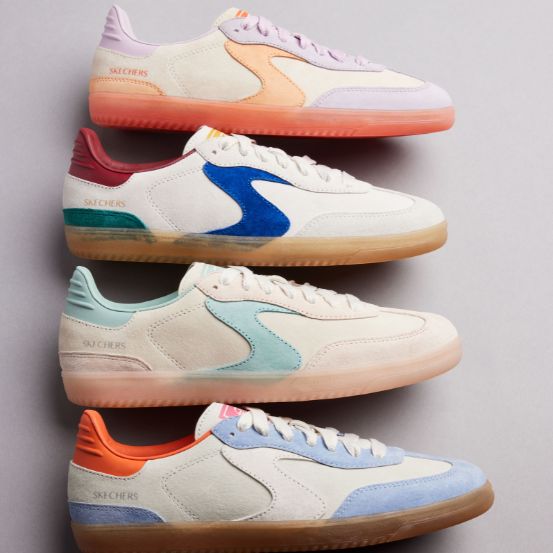Curated by GIRLS is the project that is shaping the future of art history. By giving a platform to under-represented female artists, Laetitia Duveau makes it possible for femininity to be told by the ones that live it.
Curated by GIRLS is the project that is shaping the future of art history. By giving a platform to under-represented female artists, Laetitia Duveau makes it possible for femininity to be told by the ones that live it.

In a museum, the empty space is just as important as the one occupied with artworks. In between Picassos, Monets, and Kandiskys, an absence becomes too loud to ignore. Why is it that, out of the most well-known artists in history, only a small minority is female? These questions are disarmingly simple but their answers are infinitely complex. We can, however, state: they existed. Women artists lived side by side with the ones that so ironically represented femininity through a blurry lens. Without the real representation of women by women, the art that we accepted as legitimate became synonymous with the male gaze.
Laetitia Duveau, the founder of the platform Curated by GIRLS, is correcting the errors of the past, giving a voice to underrepresented artists that, through traditional means, would meet the same fate their predecessors did. Not depending on the institutions that dictated the successes of the past, the initiative makes use of social media
Curated by GIRLS is trailing a new path, one that highlights the messages that deserve an audience. Even though their online presence is monumental, their physical exhibitions are masterpieces of curation, they’re a complex fable of unique perspectives on extremely relevant issues. With their most recent exhibition, Nova Feminilidade, which opens in Lisbon on March 8th, Curated By GIRLS gathers twenty-eight artists to dissect notions of feminity.
How did the concept of Curated by GIRLS come about?I had just moved to Berlin in 2016, in search of new inspiration - I was a bit tired of the Parisian (elitist) lifestyle, especially as a struggling musician. I thought Berlin was the best place for a fresh start. CBG started there, initially with a friend. Being both female artists, we knew so well how difficult it can be to be heard when you don’t have connections in the business. We thought the landscape of Art needed a change, with more under-represented artists at the forefront. And without overthinking Curated by GIRLS was born: a platform, by women, to celebrate other fellow artists, giving them a space to share their work. Unfortunately, after the launch, my friend had to quit. But this project was too important for me, so I kept going on my own. And almost 6 years later, I am here in Lisbon about to have the next CBG exhibition.
Social media seems to be one of Curated by GIRLS' strongest tools, how do you think the development of online platforms, like Instagram, has helped the project?Without social media, Curated by GIRLS wouldn’t exist. The project started on Instagram and luckily grew quite fast, organically. People from anywhere in the world can scroll down our feed and discover new art. CBG has become a community where like-minded creators and art lovers can connect. And thanks to social media, I was lucky that the project could keep going in times of pandemic, and survive online. Then, of course, it has its limits and its negative sides, like the censorship on Instagram. You cannot imagine what a female nipple can do.
What was the main inspiration behind the show Nova Feminilidade?A Nova Feminilidade (New Femininity) is our ongoing IRL group show, exploring what it means to be or feel feminine in our society made of codes and norms. The aim is to support female-identifying artists, giving them a space to showcase their art, express their vision, and have an opportunity to sell their work. After 3 editions, in Berlin, Barcelona, and Amsterdam, I was super eager to do an edition here in Lisboa where I moved during the pandemic. For A Nova Feminilidade, I invited 28 international and local artists, to shine their light on the topic of femininity in their way. Altogether these artists have created a homage to female power, shattering stereotypes, breaking taboos, through a variety of pieces, some softer and some bolder than others. The opening will be at Thirdbase studio, on March 8, to celebrate international women’s Day.
You have previously mentioned how important it was for you to transform what people perceived as weakness in you into your strength, how do you think femininity can become a way to empower women? We tend to catalog being “feminine” as being “weak” which is quite the opposite. Femininity is powerful. Women are strong! It’s just that we have been silenced for too long. Today, we can relate to other women’s stories and feel empowered because we realize we are not alone in facing similar issues. We are slowly integrating the importance of celebrating what makes us who we are, what makes us real: be its stretch marks, cellulite, rolls, scars, or wrinkles, we all are beautiful creatures. Step by step the message of inclusivity gets out there and encourages people to embrace the diversity of the world around, them and that we should always try to understand each other, not judge.
You have famously called yourself a “curator of feminine power”, in what ways do you think art can be potentialized as a tool for female empowerment? Art can be provoking, shocking, or softer, but in the end, it vehicles a message that will be interpreted by the audience. The more the message is shown, given a platform, the more impact it has. That’s how it works in our world. That’s why giving agency to under-represented artists to tell their stories through art is so important. It can help many people facing similar issues. Let’s talk about periods for example: even though 50% of the population menstruates, it is still a tremendous taboo. A lot of artists are bringing this topic into the discussion, to break the shame, stigma, and inequalities around it.
How do you hope Curated by GIRLS changes the art landscape? The project started with frustration thinking why do we always see the same artists out there? Can we show more diversity? Curated by Girls was born for that purpose. Curated by GIRLS is a kind of UFO in the art world. It’s not a typical art industry logic, the platform would be free for artists. I hate those platforms selling you exposure or reviews. It often ends up being scams. Curated by GIRLS offers a real voice to artists. I hope its growth can continue to encourage & spread the word about feminism and equity in the art world. I hope it can become a reference for emerging artists and can bring more jobs to under-represented creators out there
Curated by GIRLS is praised for its inclusivity, far extending beyond limited perceptions of feminism. In what way do you think feminity is a concept that can be applied to people other than women? I don’t think there should be limits to identity. We tend to put people in boxes when in reality we should all have the freedom to decide who we want to be. The concept of “femininity” was built by society, according to norms. Femininity is not a one-way street but has many shapes, physically, emotionally, and spiritually. I believe that not fitting into the “feminine” stereotypical rules doesn’t make you less of a “woman”. Femininity is in every one of us, we just express it differently. The female body has historically been a tool through which oppression can be exercised. How do you think art, specifically art made by women, can change the narrative around the female body? The pressure on the female body is monumental, it is constantly under the radar - criticized, judged, scrutinized, sexualized, censored. We were taught to be and act a certain way, that we can only be appreciated or accepted if we fit those codes. For so long we have seen the representation of the female body through a masculine lens, often a misogynist vision. Having art made by women is changing that narrative into a more diverse and real one. So that we can own our sexuality, instead of being objectified. We are not perfect, and we all deserve respect, and to be celebrated; All shapes, colors, and ages. By documenting this oppression and inequalities we are going through, female artists create powerful art to encourage acceptance.
The theme for this edition of Vogue Portugal is the Body, in what ways do you think art can be a medium through which different bodies can be celebrated? Art is a mix of reality and interpretation which brings to the eyepieces that are stunning and uplifting. Art is beautiful when it comes from the soul, it comes in various formats just like our bodies. Acceptance is an important matter, and we still need to fight for it. In a world where they would usually feel oppressed, I think art has the power to make people feel good. It gives people a space to shine and find harmony with their bodies and mind. The fact that we all look different is an amazing thing of the world and we should always embrace it.
Originally published in The Body Issue, from Vogue Portugal, published in March 2022.Full credits and article on the print issue.
Most popular
.png)
.png)

Relacionados





